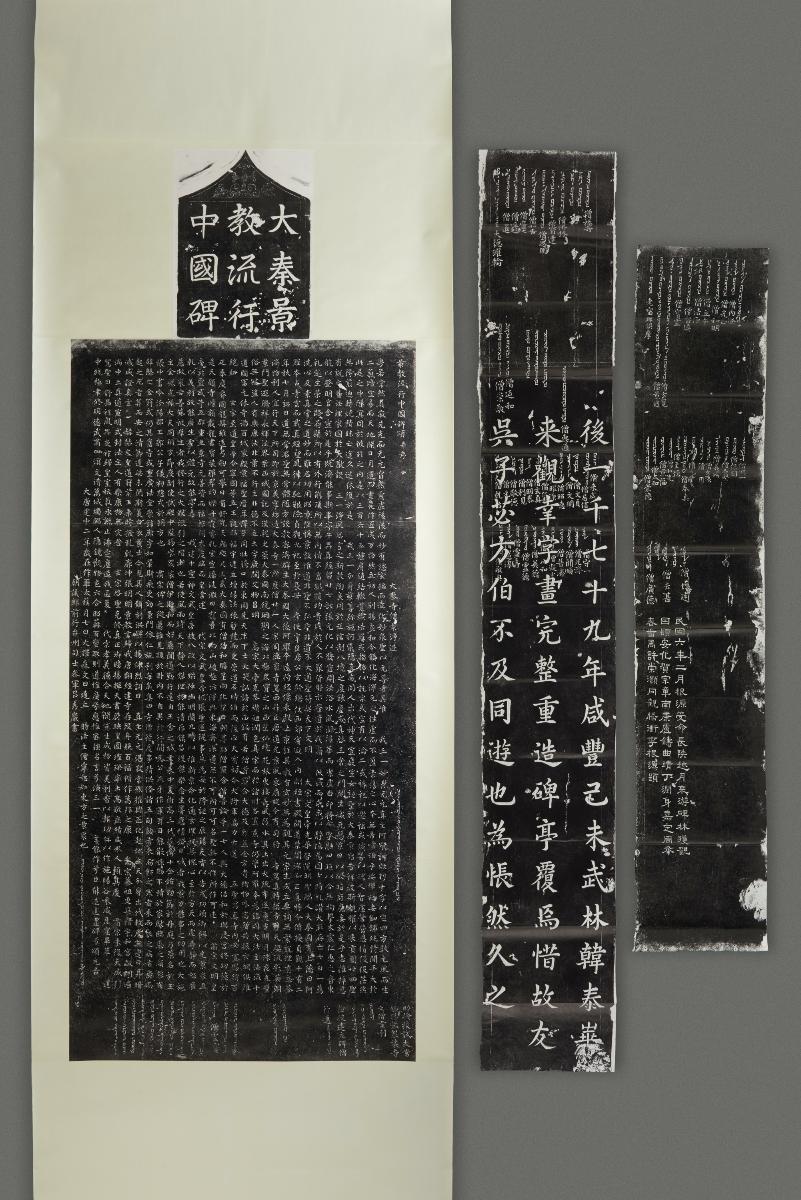
Rubbing of the stele commemorating Christianity in China
Stele: China, Xi’an, 781 (Tang Dynasty); stone, height 279 cm; Beilin Museum, Xi’an
Before doing further research on the information of early Christianity carried by this particular object, there are lots of aspects that could be appreciated from the object itself. The form of the object itself is interesting. The materials were not mentioned in the museum, although saying it was made out of paper and ink was convincing just by looking at it. It looks as if it was a paper printed with black ink, In an old-fashioned term, it is known as Rubbing and this actually inspired the method of printing back then. Rubbing itself is a method to reproduce an image from a stone surface to a paper. And this particular rubbing is a recovered image from a stone stele originating from Xi’an, China in 781, known as the Nestorian Stele. Rubbing is easier to read rather than the original object as it reproduces accurately the inscription in white with black background as long as the stone was in a good condition. Therefore, it could be assumed when rubbing was applied to the stele, it was in a rather good condition, looking at how accurate every character was translated on the rubbing.
As for the content of the rubbing itself, only important events that would be carved into stones, woods, etc. Thus it could be concluded that this rubbing contains a historical event, which is, in fact, the arrival of the Christian Church of the East in China in the 7th century. At the top of the title, there’s detailed carving of a cross. The title reads 大秦景教流行中國碑, translated as “Monument commemorating the propagation in China of the luminous religion from Da Qin”. Da Qin is how Chinese refer to Roman Empire back then. At the top of the title, there’s detailed carving of a cross. The texts in the rubbing are written in Chinese and Syriac, which is a western dialect of Aramaic. Syriac language is deeply correlated to Christianity as it is used for many Christian literatures and liturgies. It could be assumed that the stele itself was made not long after Christianity spreads in China due to the presence of a foreign language, which could be assumed sourced from a foreign party. It is written on the rubbing about how the Taizong Emperor tolerates the religion in 635 because of a Christian Missionary Alopen. The Church of the East or also known as the Nestorian Church claimed to be Roman –or Da Qin– originated to the emperor. However, the stele itself was burried in 845 because of the persecution of foreign religions. It was rediscovered in 1625.
 Cross Carving at the top
Cross Carving at the top

Syriac Language on the Nestorian Stele
Bibliography
https://roots.sg/Roots/learn/collections/listing/1388517
https://australianmuseum.net.au/stone-rubbing-from-nestorian-stele-1900s
http://www.lib.berkeley.edu/EAL/stone/rubbings.html
https://www.britannica.com/topic/Syriac-language
https://en.wikipedia.org/wiki/Nestorian_Stele

1 comment for “Contextual Analysis”